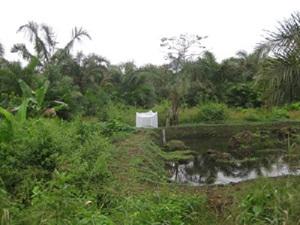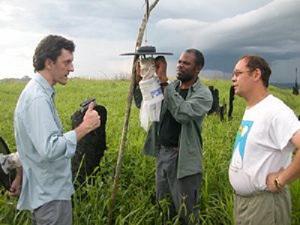Kevin Njabo
Other projects
10 May 2008
Approaches to Correlating Vectors and Diseases in Rainforest Cameroon Using Molecular Genetics and Remote Sensing
This study combines molecular and microscopic techniques to examine the bio-climatic and remote sensing variables that best correlate with vector abundance and disease prevalence.

Net trap in Nsimalen.
A multidisciplinary approach is essential for proper identification of vectors and to improve our knowledge on their epidemiological role and transmission biology.

Matt, Kevin, Anton setting a CO2 baited mosquitoe light trap.
The project consists of multiple components. The first will involve screening several mosquito’s species collected from different habitats in Cameroon to:
1) identify further potential vectors of diseases
2) document patterns in lineage diversity across the vectors,
3) explore parasite lineages in local vectors and hosts. The second part will involve inputting results (presence/absence) into the remote sensing models.
The models will be used to predict prevalence and provide information about changes in temperature, rainfall, forest fragmentation and greenness over a longitudinal time frame as well as data for cross sectional comparison between habitat types. The models will also be useful in identifying other potential regions of human disturbed areas for intensive field sampling (trapping of vectors with appropriate trapping techniques and preparing of voucher samples).